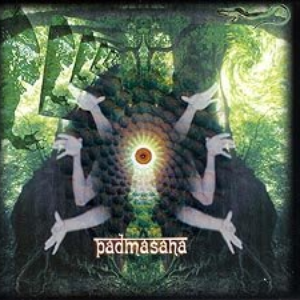
| Trackimage | Playbut | Trackname | Playbut | Trackname |
|---|---|---|---|---|
| 38012421 | Play | Holistic Resonance | 00:00 Tools | |
| 38012422 | Play | A Distant Star | 00:00 Tools | |
| 38012423 | Play | Multiverses | 00:00 Tools | |
| 38012424 | Play | Be Where Now | 00:00 Tools | |
| 38012425 | Play | Transition | 00:00 Tools | |
| 38012426 | Play | Evolution | 00:00 Tools | |
| 38012427 | Play | Vibration (Part One) | 00:00 Tools | |
| 38012428 | Play | Vibration (Part Two) | 00:00 Tools | |
| 38012429 | Play | Holistic Resonance (Pulsar Mix) | 00:00 Tools | |
| 38012430 | Play | A Universal Consciousness | 00:00 Tools | |
| 38012432 | Play | Multiverse | 00:00 Tools | |
| 38012431 | Play | Padmasana | 00:00 Tools | |
| 38012433 | Play | A Universal Conciousness | 00:00 Tools | |
| 89947501 | Play | The Suicidal Doomer Playlist | 00:00 Tools | |
| 38012434 | Play | Holistic Resonance (PulsarMix) | 00:00 Tools | |
| 38012435 | Play | Holistic Resonance { SOFASPACE } | 00:00 Tools | |
| 38012436 | Play | A Distant Star { SOFASPACE } | 00:00 Tools | |
| 38012437 | Play | A Distant Star { sofaspace.net } | 00:00 Tools | |
| 38012438 | Play | Be Where Now { SOFASPACE } | 00:00 Tools | |
| 38012440 | Play | 02 - A Distant Star | 00:00 Tools | |
| 38012443 | Play | flowers | 00:00 Tools | |
| 38012439 | Play | Be Here Now | 00:00 Tools | |
| 38012441 | Play | Be Where Now { sofaspace.net } | 00:00 Tools | |
| 38012442 | Play | Holistic Resonance { sofaspace.net } | 00:00 Tools | |
| 38012444 | Play | Universal Consciousness | 00:00 Tools | |
| 88240804 | Play | Vibration (Part 1) | 00:00 Tools | |
| 38012445 | Play | halistic nesonance | 00:00 Tools | |
| 38012448 | Play | Vibration | 00:00 Tools | |
| 38012446 | Play | Vibration pt 1 | 00:00 Tools | |
| 38012447 | Play | Transition. | 00:00 Tools | |
| 88240805 | Play | Vibration 2 | 00:00 Tools | |
| 88240806 | Play | Vibration 1 | 00:00 Tools | |
| 88240807 | Play | Vibration (Part 2) | 00:00 Tools |

-
- 20,764
- plays
-
- 3,145
- listners
-
- 20764
- top track count
Giovanni Fazio (aka Makyo), David Hikari & S. Widi Padmasana is a collaboration between Gio Makyo and David Hikari, a pair of Tokyo chill-out djs, and the mysterious S. Widi, their "spiritual advisor" from Bali. This album was inspired by misty nights in Ubud and the mind-shattering "oong" mushrooms of Bali. The music takes you on a trip through inner and outer space, finally ending up back in the lush, tropical ambience of Ubud at night. The album features field recordings and live performances recorded in Bali, Tibet, and Tokyo, and varied instrumentation, including: Tibetan mantra, gamelan, Indian frame drum, water drums, bass, assorted Balinese percussion, sampler, cumbus, broken BassStation, Korg Z1, voice, Eventide Harmonizer, tr-303, tabla, and Ubud night insects and frogs. About Padmasana: "Padmasana" is a common type of shrine found in Bali --although most gods and goddesses are usually visually depicted with statues and other works of art, the supreme godhead is shown only as an empty chair, the "padmasana" ("lotus seat"). On one level, this is a great spiritual prank; on another, it's full of meaning: the divine cannot be shown as a "god", because ultimately, it's everywhere and in everyone. Read more on Last.fm. User-contributed text is available under the Creative Commons By-SA License; additional terms may apply.